From ACIG.org
ACIG Database
Bear Hunters, Part 5: ASW Style
By ACIG Team
Aug 10, 2004, 05:55
Sometimes in 1979 the Japanese military heard a non-ciphered radio communication from a Soviet Echo I submarine, appealing for help. Deploying patrol aircraft into the area from which the call came, the Japanese found a Soviet Echo I submarine on the surface, some 170km NE of Okinawa. The damaged Soviet sub, which lost nine killed and 50 injured, was taken in tow by the Soviet merchant ship Meridyan, and towed to Vladivostok.
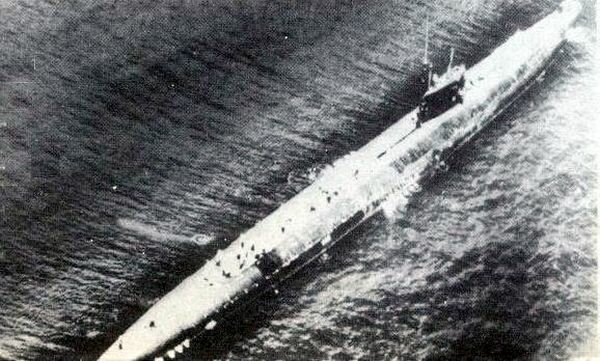 |
| Echo I as seen on the surface, with part of the crew on the deck. (Tom Cooper collection) |
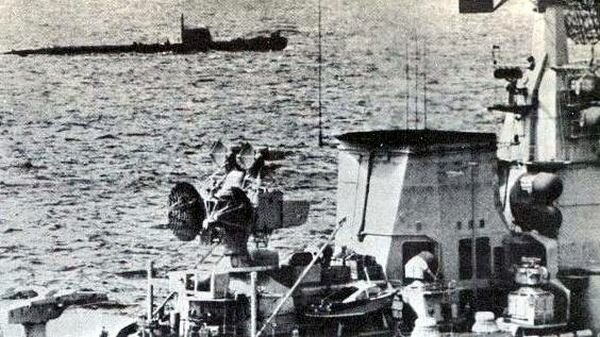 |
| The damaged Echo was soon surrounded by several Soviet warships, summoned to help - including the guided missile cruiser Petropavlovsk. (Tom Cooper collection) |
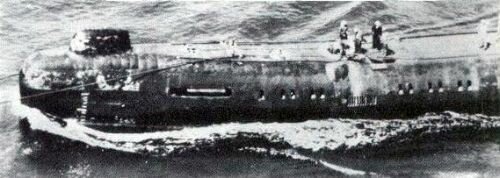 |
| Soviet Sailors seen while working on the prov of the damaged submarine. (Tom Cooper collection) |
Whiskey on the Rocks
In November 1981 a Soviet Whiskey-class submarine run aground near Karlskrona, in Sweden. Initially, the Swedes had vowed to keep the submarine until the Soviets gave an adequate explanation of how and why its skipper had come to grief only ten yards from shore. The Swedes scoffed at the Soviet's reported claim that the sub's navigation gear had failed: after all, it had certainly been working well enough to guide the vessel up the channel in the first place.
The Soviets apologized and agreed to pay some $658.000 for the salvage operatinas and, after some sharp diplomatic words, the Swedes agreed to let the sub go.
The situation then turned into a drama: the skipper of the Soviet sub, Commander Pyotr Gushin, refused to leave his vessel to talk to the Swedes for six days. Not until Soviet Foreign Minister Andrey Gromyko allowed him to cooperate did the commander relent. Then Gushin and his navigation officer emerged, to talk with Swedes.
One hour after the harsh Baltic elements took an unexpected hand in the plot, with gale winds of up to 160km/h slamming towering combers against the sub. The boat was slamed on teh rocks under it, the sounds ringing through the whole hull: the situation broke the discipline and the 50-man crew soon has had enough: firing red flares and calling "mayday, mayday" on the radio, they requested help. The Swedes hurried to the rescue, finding a panic-loaded crew: after two hours of maneuvering, four Swedish tugboats managed to shunt the sub into a nearby port.
Even then, the Soviets remained skittish: 31 hours after the rescue, the Soviets started firing signal flares again. This time, there was no emergency, but the crew wanted to know what happened with their navigator and Commander Gushin. He was meanwhile under interrogation by Swedish authorities, continuing to stick to his story about flawed navigational equipment.
Eventually, Swedish officials boarded the sub and found the navigational gear in perfectly working order. To their surprise, however, they found huddled bellow the deck the head of the entire Soviet submarine flotilla in Baltiysk naval base...
The situation only became even more embarrassing for the Soviets after the Swedes announced that their investigation resulted in finding of uranium 238 aboard the sub, leading to accusation that it probably carried nuclear weapons. The Soviets replied that it "only carried the necessary weapons and ammunition". Of course, eventually, the sub was let to go.
Yet, the episode was an immense embarrassment not only for the Soviets: the Swedes could never explain how a submarine of 1950s vintage had managed to penetrate their waters undetected until passing fisherman in a dory looked over - and there she was: the Whiskey atop the rocks.
 |
| In November 1981 the antiquated Soviet Whiskey-class submarine (Hull No. 137) run aground near the Swedish naval base in Karlskrona, in the Baltic Sea. An affair that was quite embarassing fot the Soviets erupted, then the Swedes initially vowed to keep the intruder until there would be an adequat explanation of how and why the sub's skipper had come to grief only ten yards from shore. Eventually, the Soviets explained that there was a failure in navigation gear, and the Submarine was salvaged by Swedish ships - at a price of $658.000, paid for by the USSR. (Photo: AP) |
 |
| The Wiskey as seen while escorted by a Swedish patrol craft and two helicopters out of Gaase Bay. (Photo: AP) |
Victor IIIs in Action
 |
| This encounter occurred either in 1983 or in 1986, when a Victor III-class Soviet attack submarine became entangled in a 10cm thick steel cable for towing sonar of the USN frigate USS McCloy. The incident occurred some 470nm east of Charleston, South Carolina, when the US frigate was securing the route of a carrier battle group that was underway for exercises near Cuba. The submarine was subsequently towed away to Cuba. (Photo: USN, via Tom Cooper) |
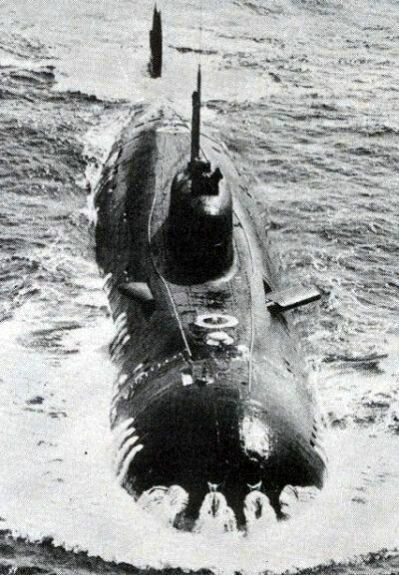 |
| The Victor III-class submarine as seen in damaged condition after collision with USS Kitty Hawk. (Photo: Tom Cooper collection) |
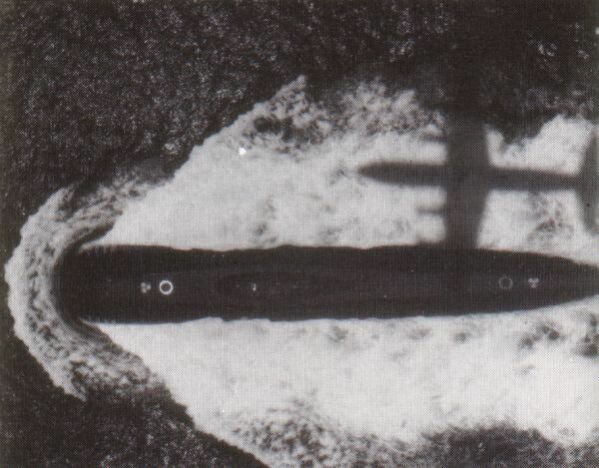 |
| Shadow of a USN P-3C can also be seen over this Victor-class SSN, seen in the Mediterranean Sea, in the mid-1980s. (Photo: USN, via Tom Cooper) |
 |
| Lockheed S-3A Viking from USS Ranger tracking a Victor-class SSN in the Sea of Japan, in 1984. (Photo: USN, via Tom Cooper) |
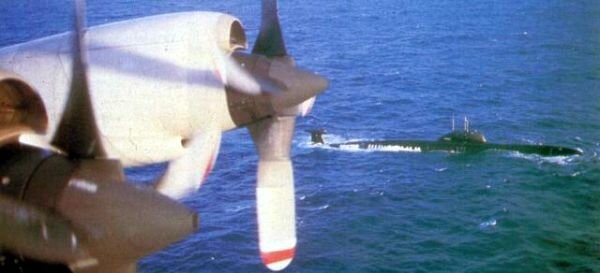 |
| (Photo: USN, via Tom Cooper) |
 |
| (Photo: USN, via Tom Cooper) |
Stalking Soviet Warships
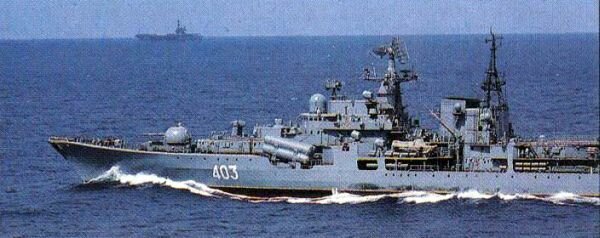 |
| Soviet Sovremeniy-class destroyer tracking USS Saratoga, during operations off of the Libyan coast, in April 1986. (Photo: USN, via Tom Cooper) |
 |
| USN Lockheed P-3C Orion overflying a Soviet Kynda-class missile cruiser, somewhere in the Pacific of the early 1980s. (Photo: USN, via Tom Cooper) |
 |
| USN P-3C over a Soviet Udaloy-class destroyer, in the late 1980s. (Photo: USN, via Tom Cooper) |
Bear on Hunt
During the ICEX 2003 naval exercises near the North Pole, the USN submarine USS Connecticut (SSN-22) poked its sail and rudder through the ice. When an officer looked around via the periscope, he noted that his sub was being stalked by a "hostile" polar bear: the photos bellow show the "attack". The bear chewed on the sub's rudder for few minutes - causing minor damage: the experience showed that the USS Connecticut was not designed as a polar bear snack.
 |
| (Photo: USN, via Tom Cooper) |
 |
| (Photo: USN, via Tom Cooper) |
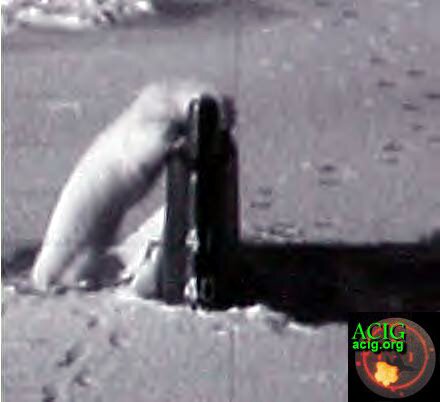 |
| (Photo: USN, via Tom Cooper) |
Sinkex: Mk.48 hit on Spruance-class Destroyer
 |
| (Photo: USN, via Tom Cooper) |
 |
| (Photo: USN, via Tom Cooper) |
 |
| (Photo: USN, via Tom Cooper) |
 |
| (Photo: USN, via Tom Cooper) |
© Copyright 2002-3 by ACIG.org
|






















